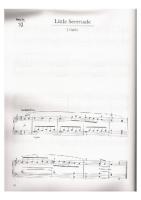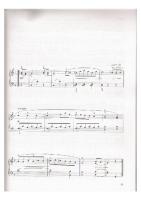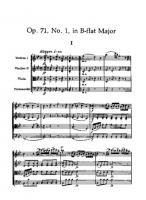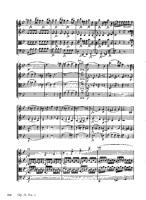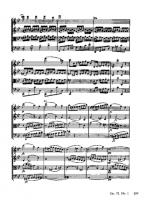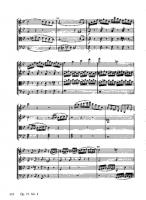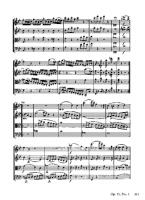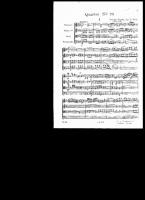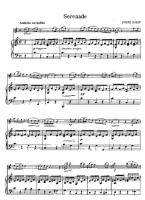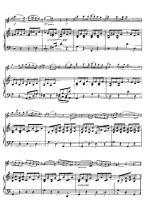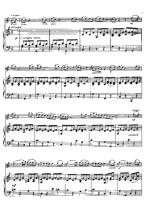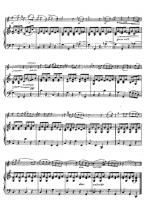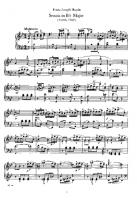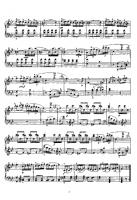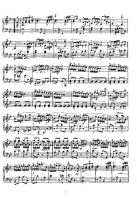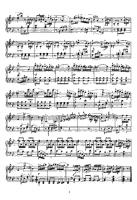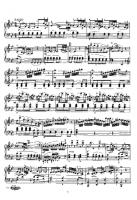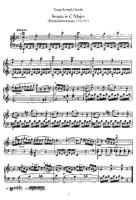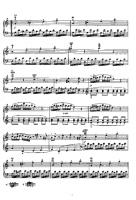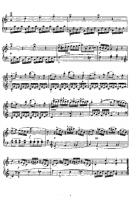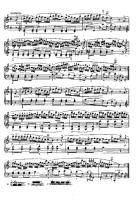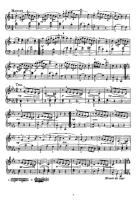Haydn Sheet Music
Franz Joseph Haydn (March 31, 1732 – May 31, 1809) was one of the most prominent composers of the classical period, and is called by some the "Father of the Symphony" and "Father of the String Quartet".
A life-long resident of Austria, Haydn spent most of his career as a court musician for the wealthy Hungarian Esterházy family on their remote estate. Isolated from other composers and trends in music until the later part of his long life, he was, as he put it, "forced to become original".
Although Haydn is still often called "Franz Joseph Haydn", the composer did not use the name "Franz" during his lifetime and this misnomer is avoided by modern scholars and historians. Joseph Haydn was the brother of Michael Haydn, himself a highly regarded composer, and Johann Evangelist Haydn, a tenor.
A central characteristic of Haydn's music is the development of larger structures out of very short, simple musical motifs, often derived from standard accompanying figures. The music is often quite formally concentrated, and the important musical events of a movement can unfold rather quickly.
Haydn's work was central to the development of what came to be called sonata form. His practice, however, differed in some ways from that of Mozart and Beethoven, his younger contemporaries who likewise excelled in this form of composition. Haydn was particularly fond of the so-called "monothematic exposition", in which the music that establishes the dominant key is similar or identical to the opening theme. Haydn also differs from Mozart and Beethoven in his recapitulation sections, where he often rearranges the order of themes compared to the exposition and uses extensive thematic development.
Perhaps more than any other composer's, Haydn's music is known for its humour. The most famous example is the sudden loud chord in the slow movement of his "Surprise" symphony; Haydn's many other musical jokes include numerous false endings (e.g., in the quartets Op. 33 No. 2 and Op. 50 No. 3), and the remarkable rhythmic illusion placed in the trio section of the third movement of Op. 50 No. 1.
A life-long resident of Austria, Haydn spent most of his career as a court musician for the wealthy Hungarian Esterházy family on their remote estate. Isolated from other composers and trends in music until the later part of his long life, he was, as he put it, "forced to become original".
Although Haydn is still often called "Franz Joseph Haydn", the composer did not use the name "Franz" during his lifetime and this misnomer is avoided by modern scholars and historians. Joseph Haydn was the brother of Michael Haydn, himself a highly regarded composer, and Johann Evangelist Haydn, a tenor.
A central characteristic of Haydn's music is the development of larger structures out of very short, simple musical motifs, often derived from standard accompanying figures. The music is often quite formally concentrated, and the important musical events of a movement can unfold rather quickly.
Haydn's work was central to the development of what came to be called sonata form. His practice, however, differed in some ways from that of Mozart and Beethoven, his younger contemporaries who likewise excelled in this form of composition. Haydn was particularly fond of the so-called "monothematic exposition", in which the music that establishes the dominant key is similar or identical to the opening theme. Haydn also differs from Mozart and Beethoven in his recapitulation sections, where he often rearranges the order of themes compared to the exposition and uses extensive thematic development.
Perhaps more than any other composer's, Haydn's music is known for its humour. The most famous example is the sudden loud chord in the slow movement of his "Surprise" symphony; Haydn's many other musical jokes include numerous false endings (e.g., in the quartets Op. 33 No. 2 and Op. 50 No. 3), and the remarkable rhythmic illusion placed in the trio section of the third movement of Op. 50 No. 1.
Search for Free Sheet Music
You can make a search through the entire collection of sheets.
You can make a search through the entire collection of sheets.
Latest Artists
Ragtime
× 2
Star Trek × 1
Saint Saens × 1
Carl Saunders × 1
Paul Smadbeck × 1
Scott Joplin × 2
Jay Chou × 1
Charles Koechlin × 1
Nino Rota × 1
Freddie Mercury × 2
Janis Joplin × 1
Arlene Schwartzkopf × 1
Coldplay × 3
Bruce Baker × 1
Journey × 1
Frank Sinatra × 3
Vangelis × 1
Ah Doe × 1
Friedrich Kuhlau × 1
Rodgers and Hart × 1
Evencio Castellanos × 1
Borodin × 1
Ellen & Joost Laninga × 1
Ariel Rivera × 1
William Bradbury × 1
Beethoven × 5
Albert W Ketelbey × 1
The Phil Collins Big Band × 1
Long Shot Party × 1
Bob Watson × 1
Jazz for Seniors × 1
Win Mertens × 1
Cole Porter × 2
Z. RANDALL STROOPE × 1
Olivier Toussaint × 1
Claude Bolling × 2
Joseph Kosma × 1
fats waller × 2
Johann Pachelbel × 2
Ouran High School Host Club × 1
William M. Golden × 1
Stevie Wonder × 2
Zinnia Lim × 1
Tony Bennett × 1
Eric Whitacre × 2
Silvain Guinnet × 1
Sandy Wan × 1
Cannonball Adderley × 1
John Scofield × 1
Danny Elfman × 1
Star Trek × 1
Saint Saens × 1
Carl Saunders × 1
Paul Smadbeck × 1
Scott Joplin × 2
Jay Chou × 1
Charles Koechlin × 1
Nino Rota × 1
Freddie Mercury × 2
Janis Joplin × 1
Arlene Schwartzkopf × 1
Coldplay × 3
Bruce Baker × 1
Journey × 1
Frank Sinatra × 3
Vangelis × 1
Ah Doe × 1
Friedrich Kuhlau × 1
Rodgers and Hart × 1
Evencio Castellanos × 1
Borodin × 1
Ellen & Joost Laninga × 1
Ariel Rivera × 1
William Bradbury × 1
Beethoven × 5
Albert W Ketelbey × 1
The Phil Collins Big Band × 1
Long Shot Party × 1
Bob Watson × 1
Jazz for Seniors × 1
Win Mertens × 1
Cole Porter × 2
Z. RANDALL STROOPE × 1
Olivier Toussaint × 1
Claude Bolling × 2
Joseph Kosma × 1
fats waller × 2
Johann Pachelbel × 2
Ouran High School Host Club × 1
William M. Golden × 1
Stevie Wonder × 2
Zinnia Lim × 1
Tony Bennett × 1
Eric Whitacre × 2
Silvain Guinnet × 1
Sandy Wan × 1
Cannonball Adderley × 1
John Scofield × 1
Danny Elfman × 1








